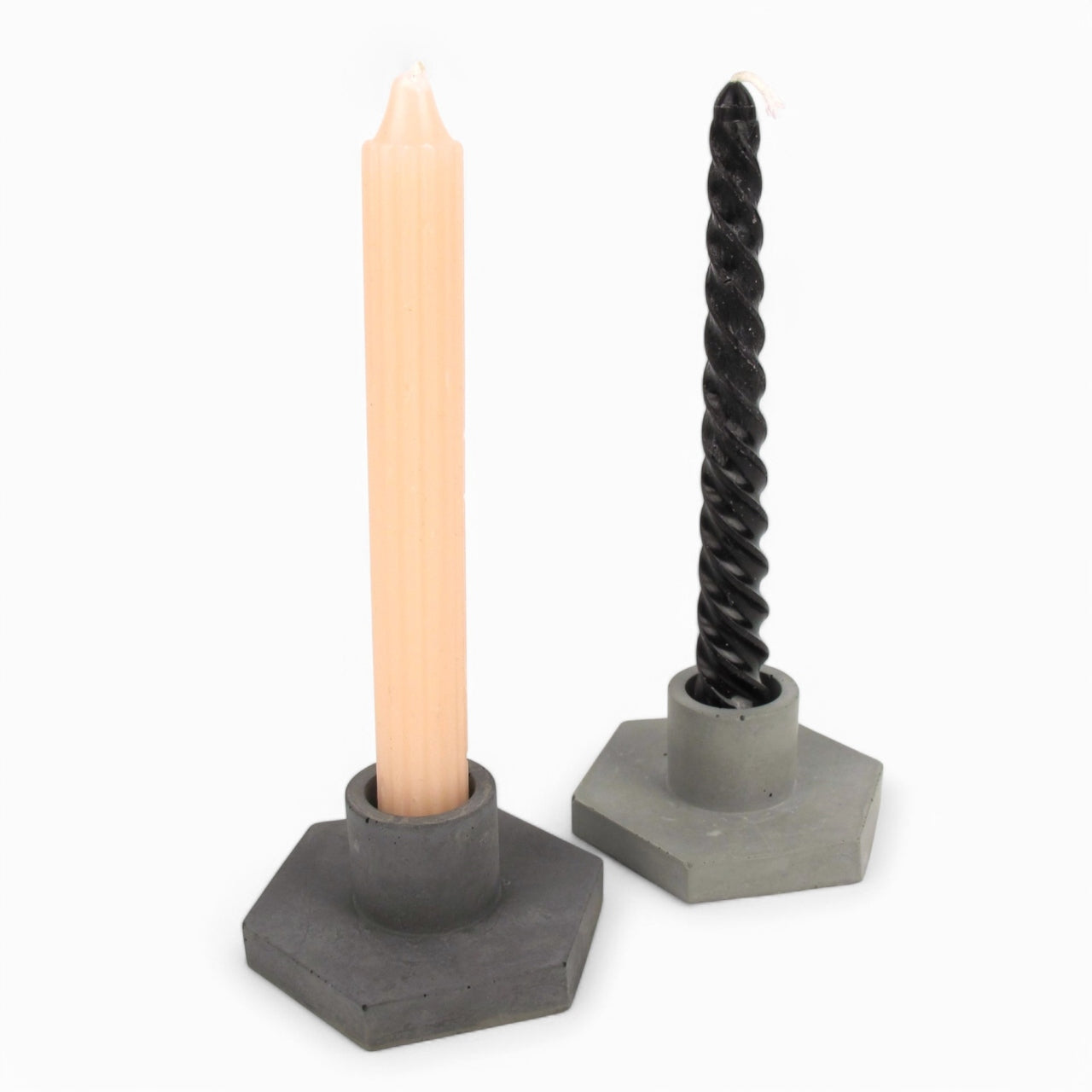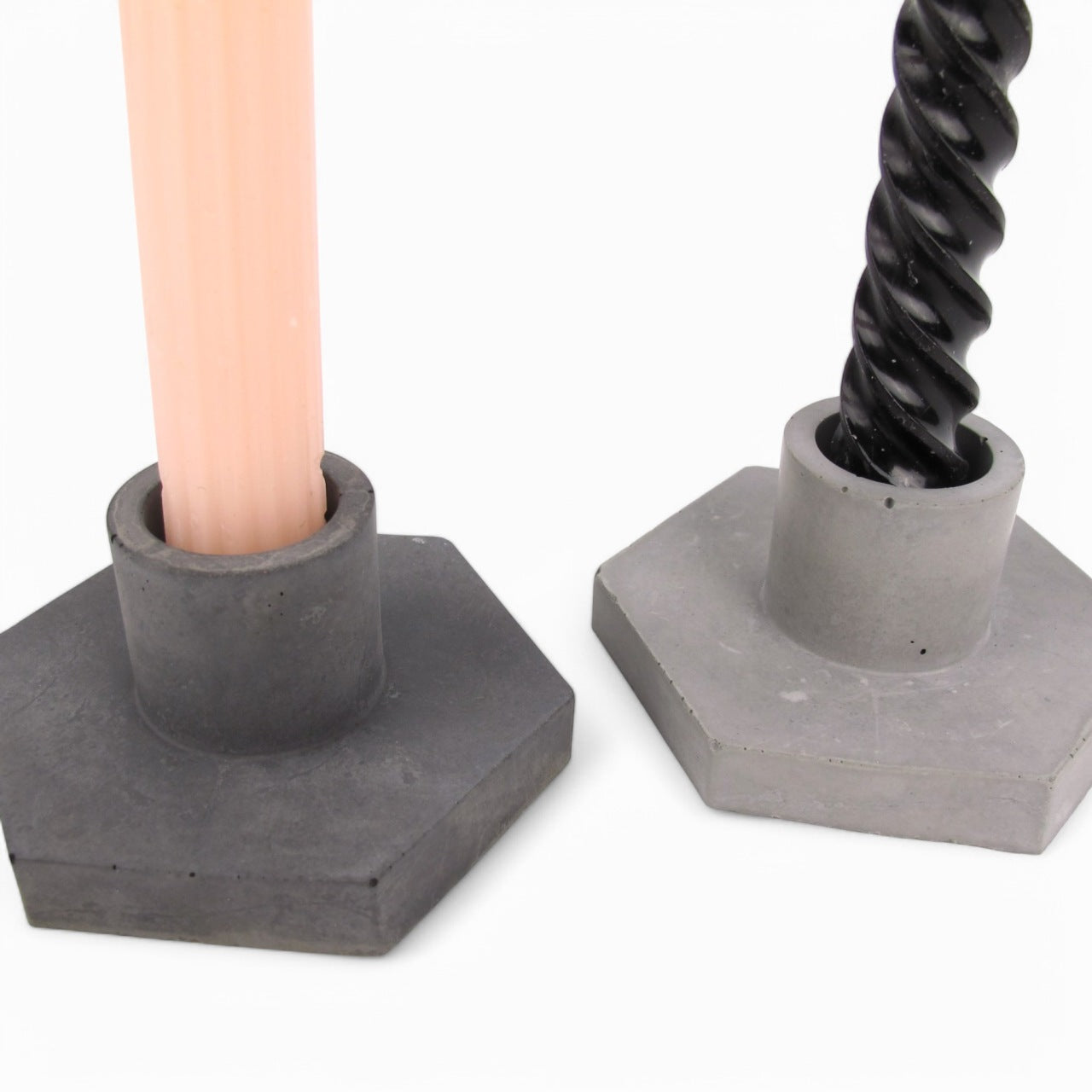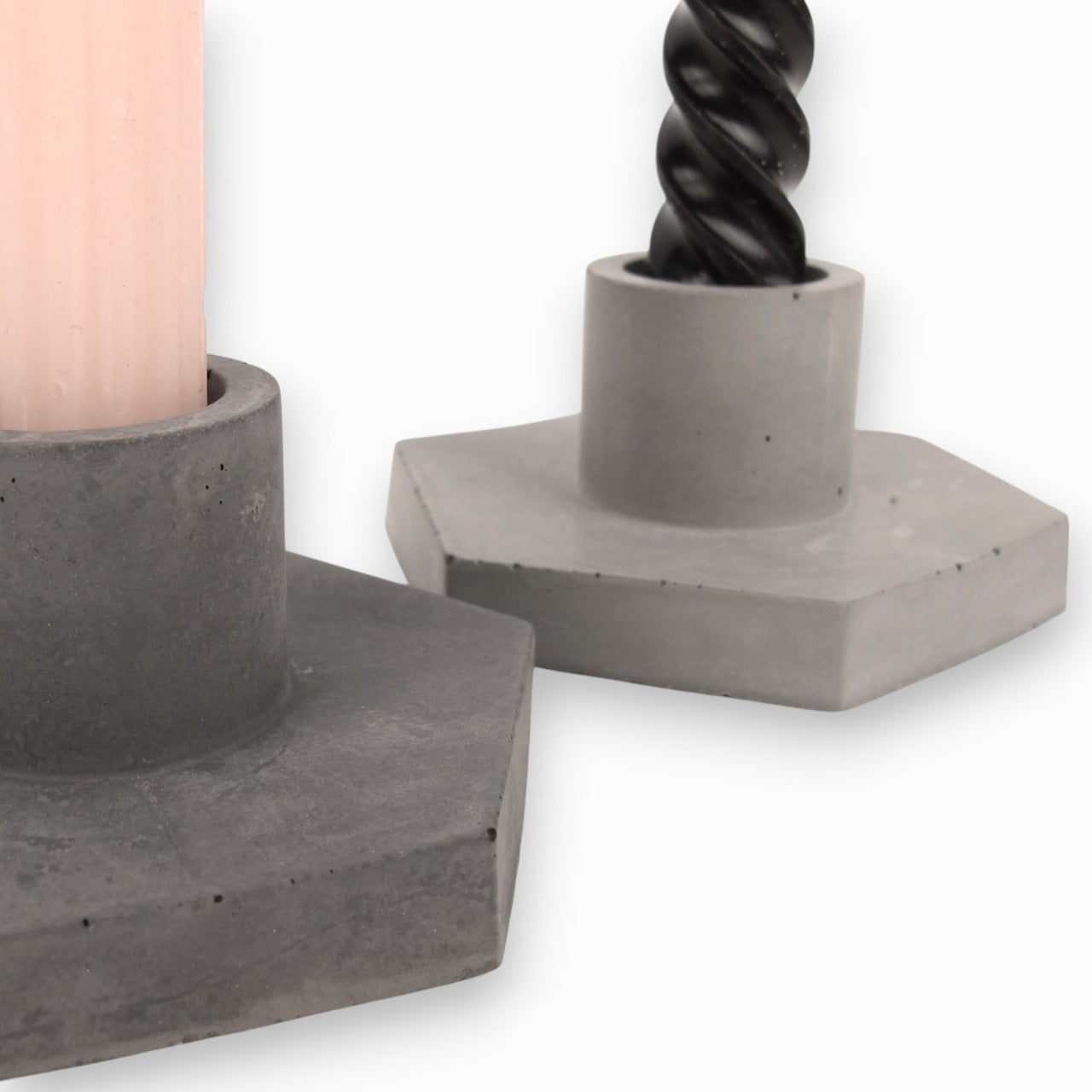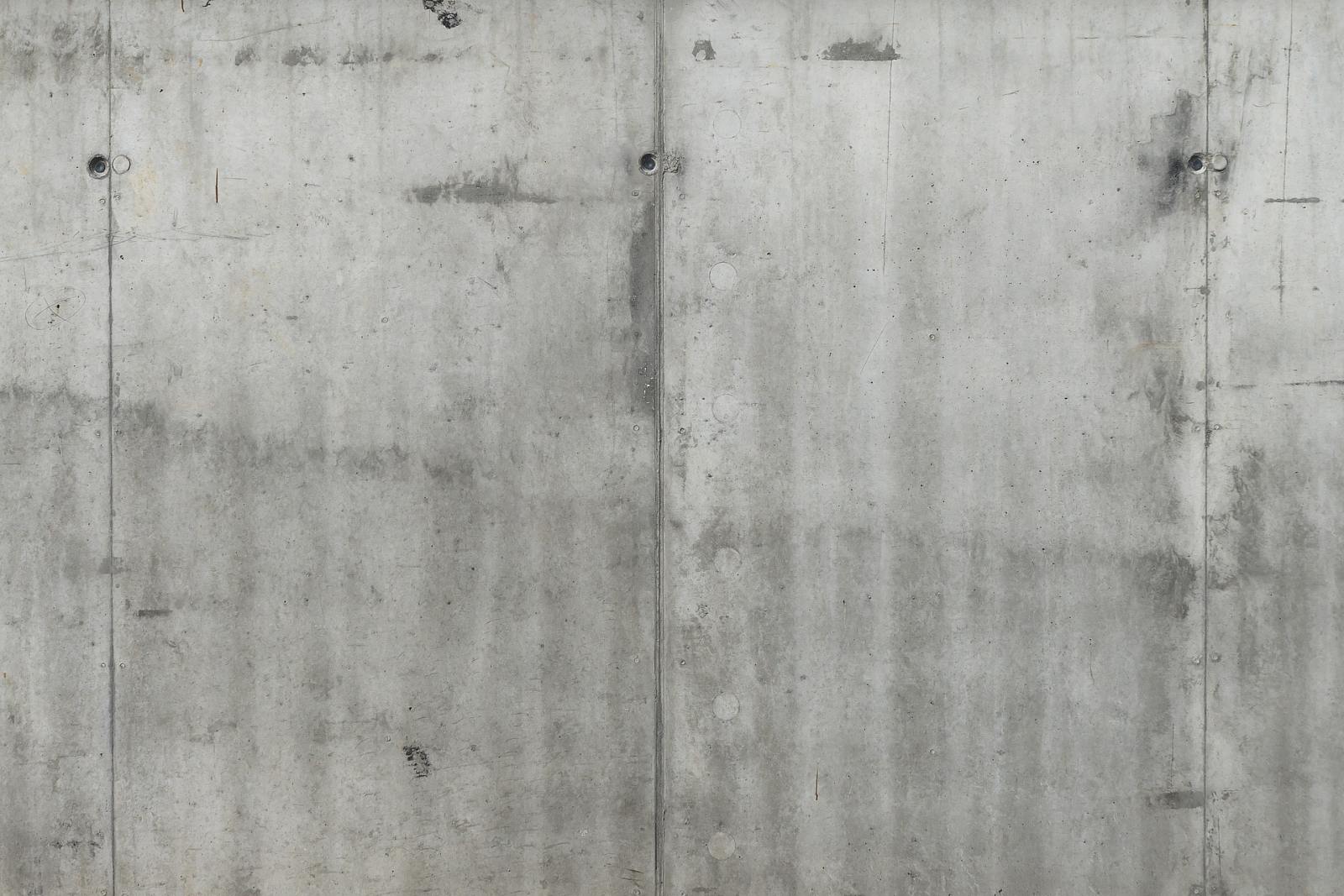Shoek
Shoek | Concrete candle holder
Shoek | Concrete candle holder
Regular price
€9,99
Regular price
Sale price
€9,99
Taxes included.
Shipping calculated at checkout.
Quantity
Couldn't load pickup availability
Shoek was cast from high-strength concrete and impresses in the colors gray and anthracite.
In combination with taper candles, this candle holder is a beautiful accessory in your home thanks to its round, modern shape. You still have some scope for individual design around the candle holder.
The socket has a hole of 2.5 cm, which is graduated to 2.1 cm, so you have the possibility to place almost any taper candle.
Details & Dimensions
Details & Dimensions
Material: high-strength concrete
Weight: 200g
Bottom: with felt feet
Special feature: waterproof
suitable for: taper candles with 2.0 - 2.6cm diameter
External dimensions [LxWxH]: 9.2 x 9.2 x 4.3 cm
Inner dimensions [LxWxH]: 2.1/2.5 x 2.1/2.5 x 3.3 cm
Shipment
Shipment
Our products are in stock and will be dispatched as soon as possible after ordering, so you will usually receive your order after 2-3 days.
For orders over 100€ we offer free shipping within Germany.
Kontakt
Kontakt
Sie haben Fragen? Wir helfen Ihnen gerne weiter!
Schreiben Sie uns einfach eine E-Mail an info@handworkz.de oder nutzen Sie unser Kontaktformular. Gerne rufen wir Sie auch zurück, wenn gewünscht, hinterlassen Sie uns dazu einfach Ihre Telefonnummer mit der Bitte um Rückruf.
Herstellerinformationen:
Handworkz by Smith UG (haftungsbeschränkt)
Wonnecker Straße 11
61130 Nidderau, DE
info@handworkz.de
www.handworkz.de
- Handcraft | Made in Germany
made of high-strength concrete
- 100% plastic-free packaging
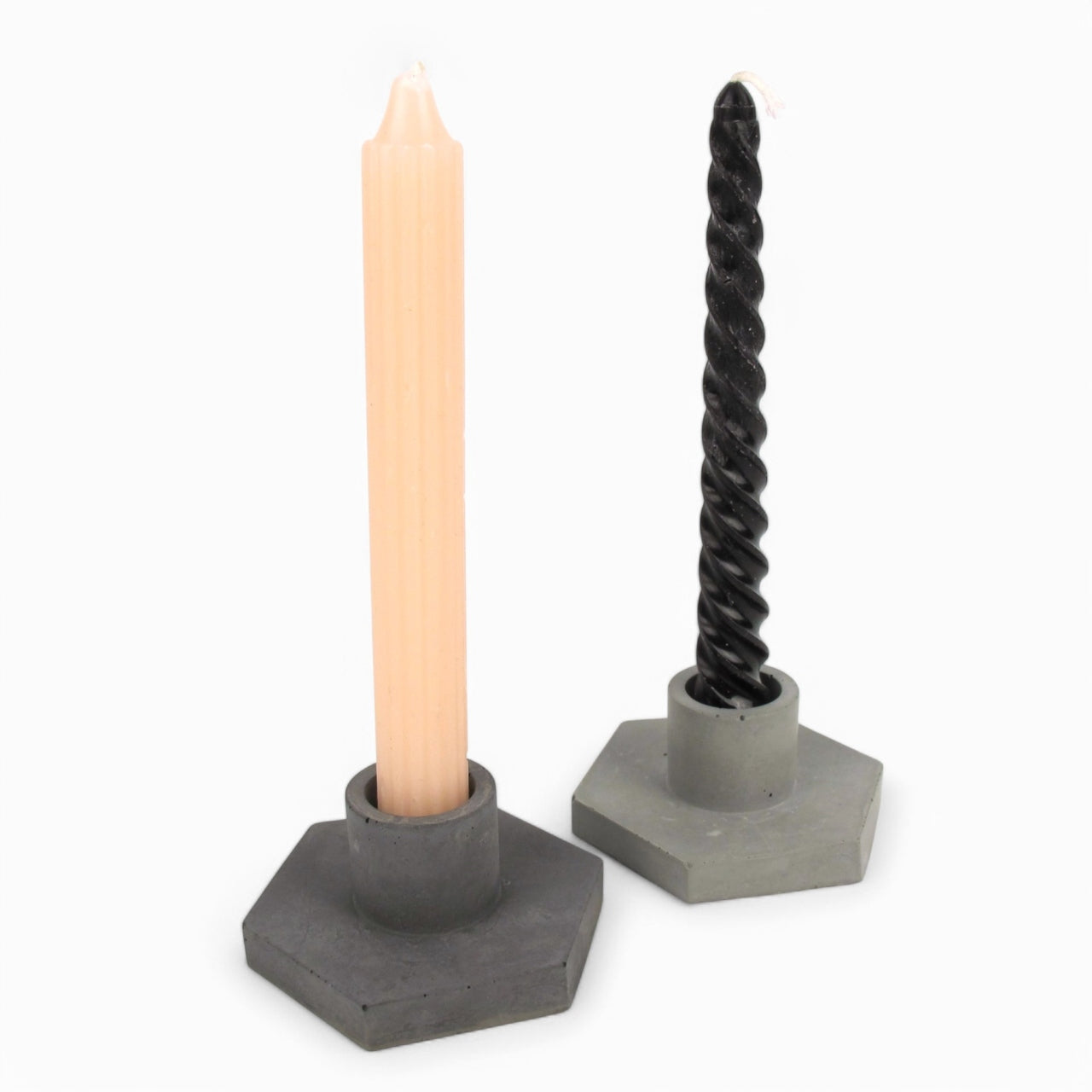
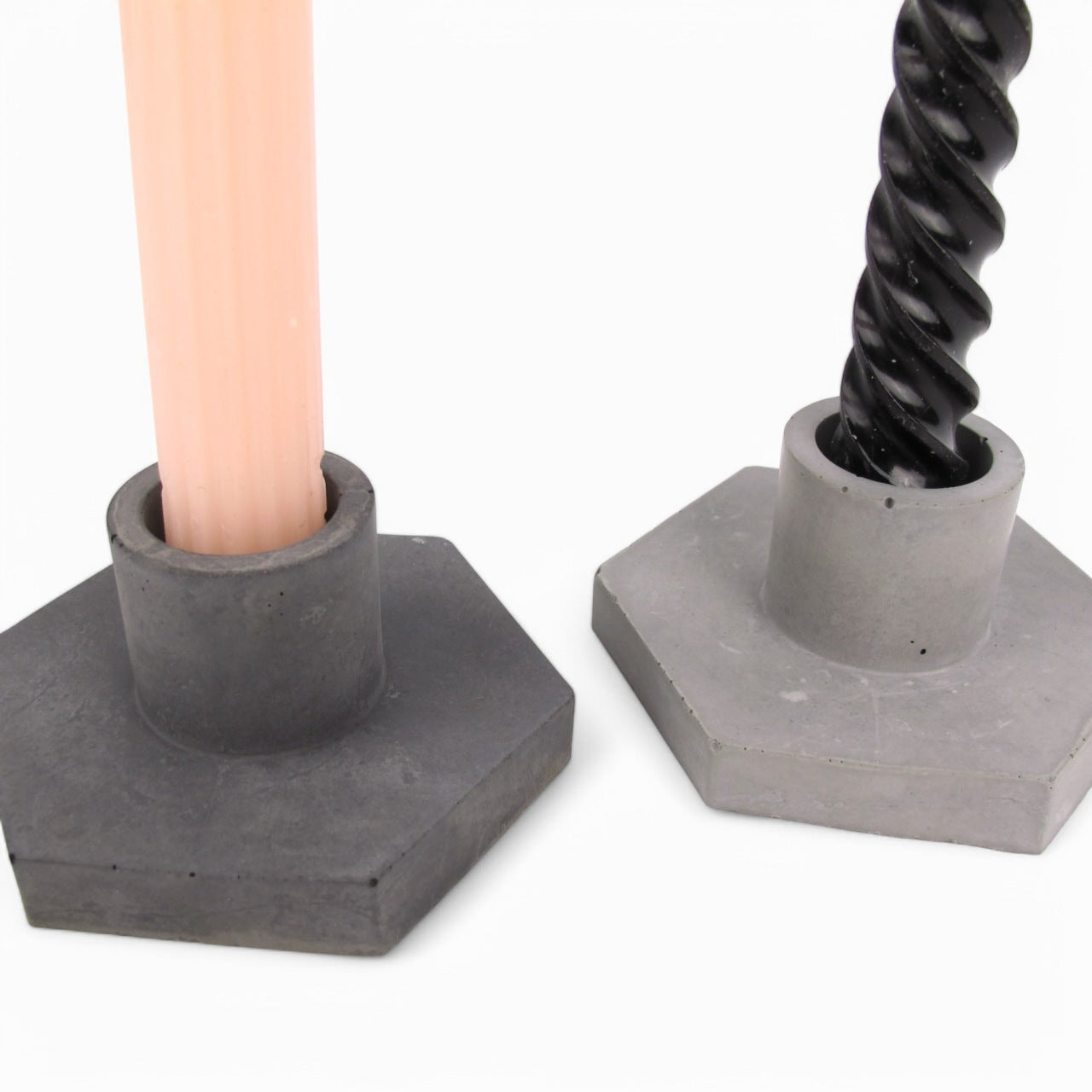
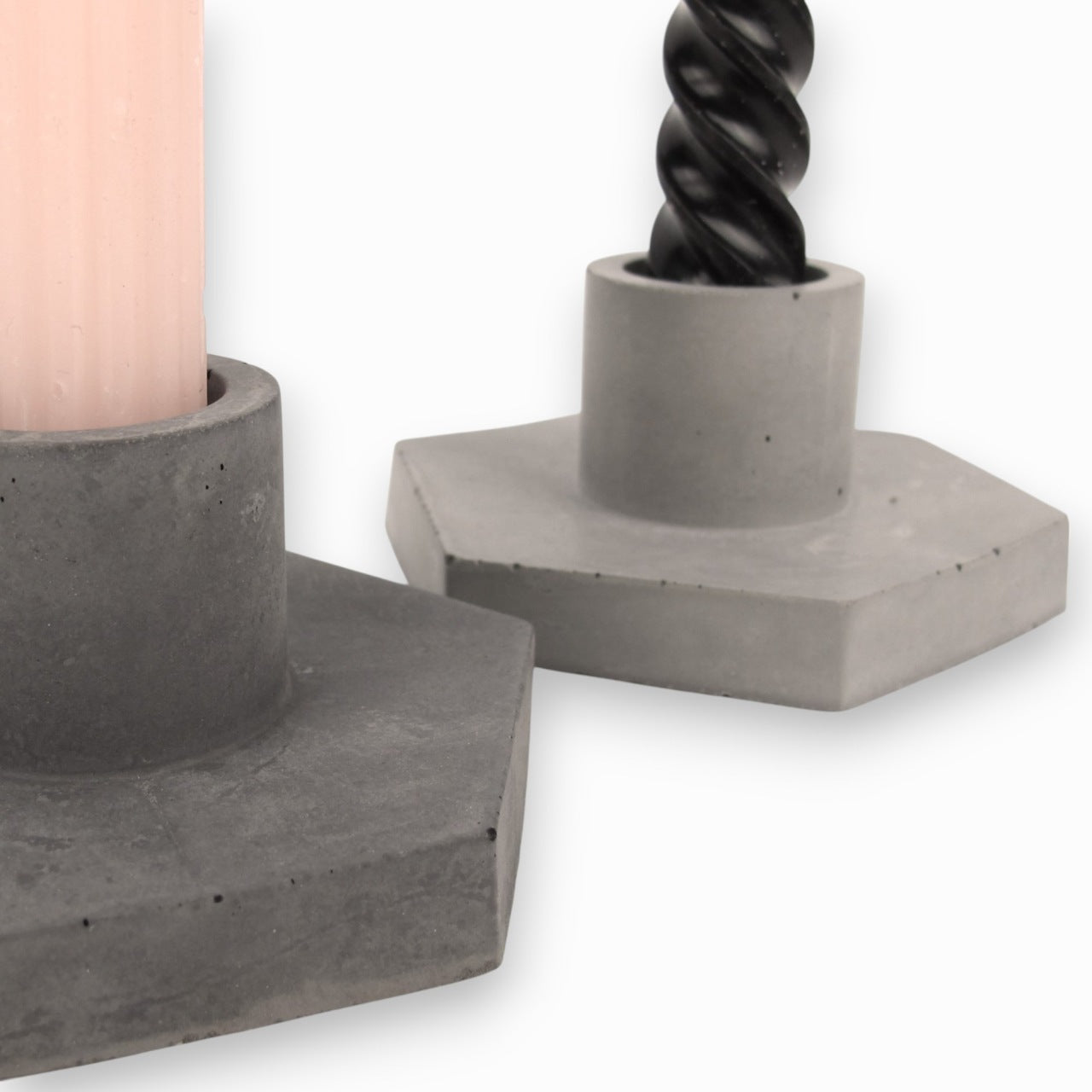
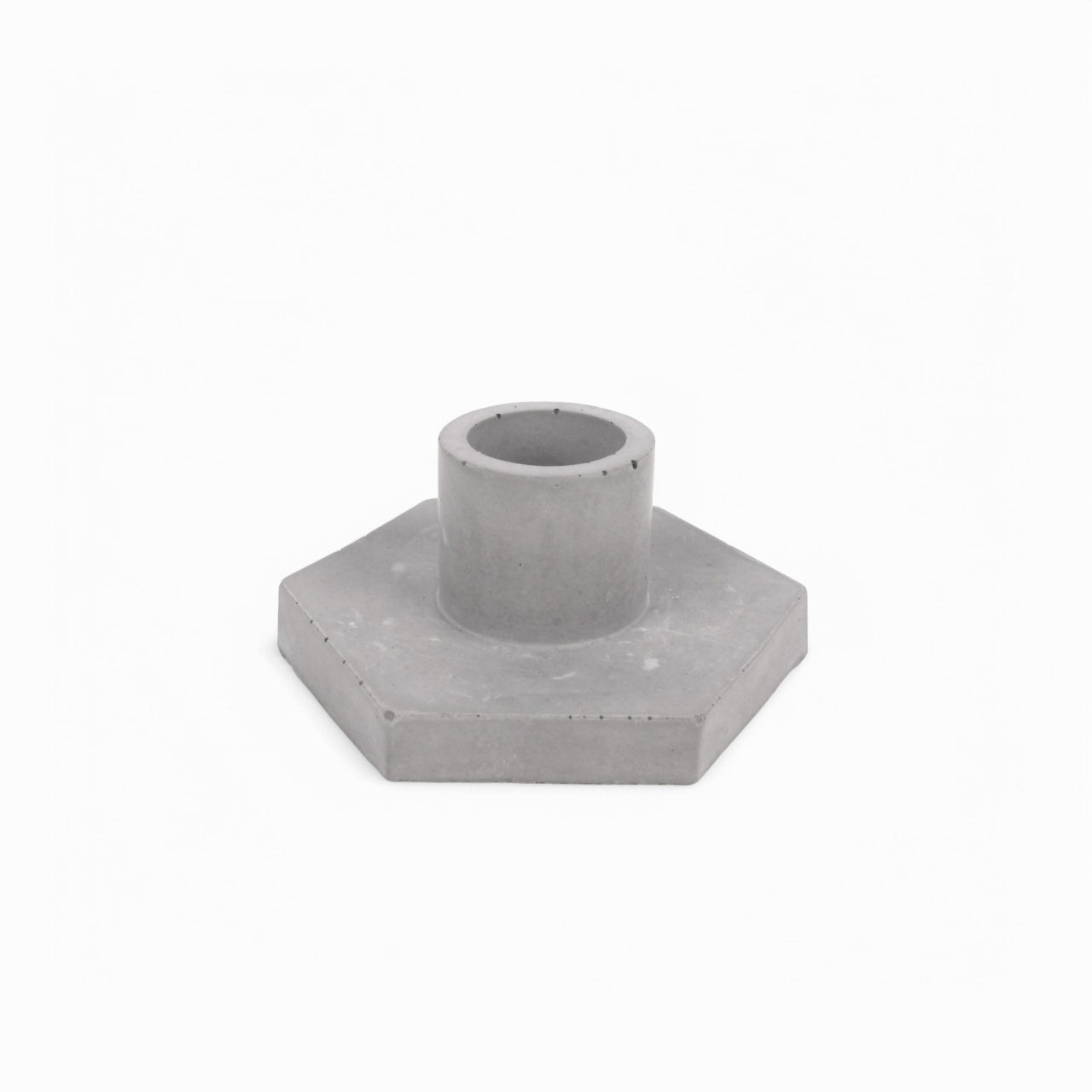
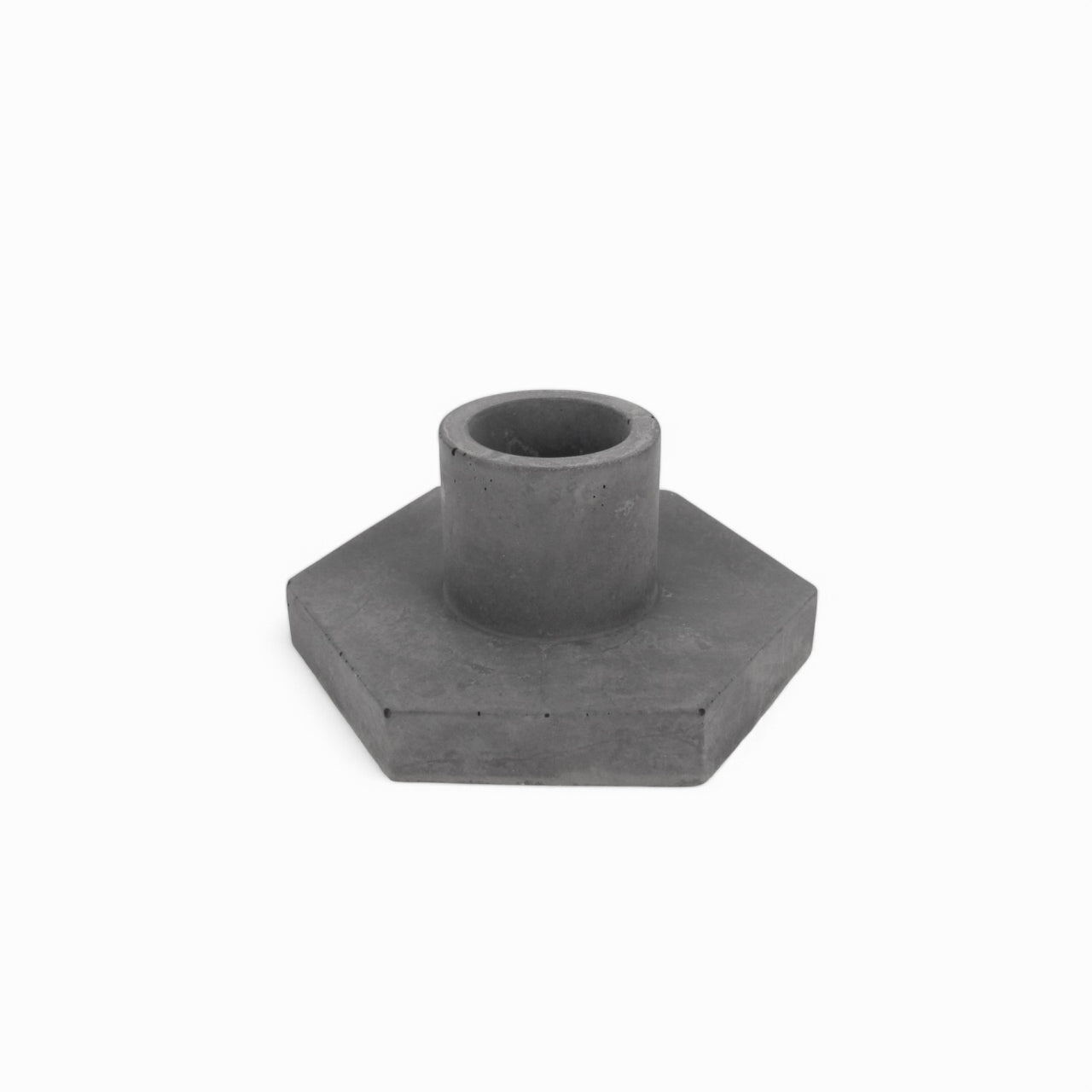
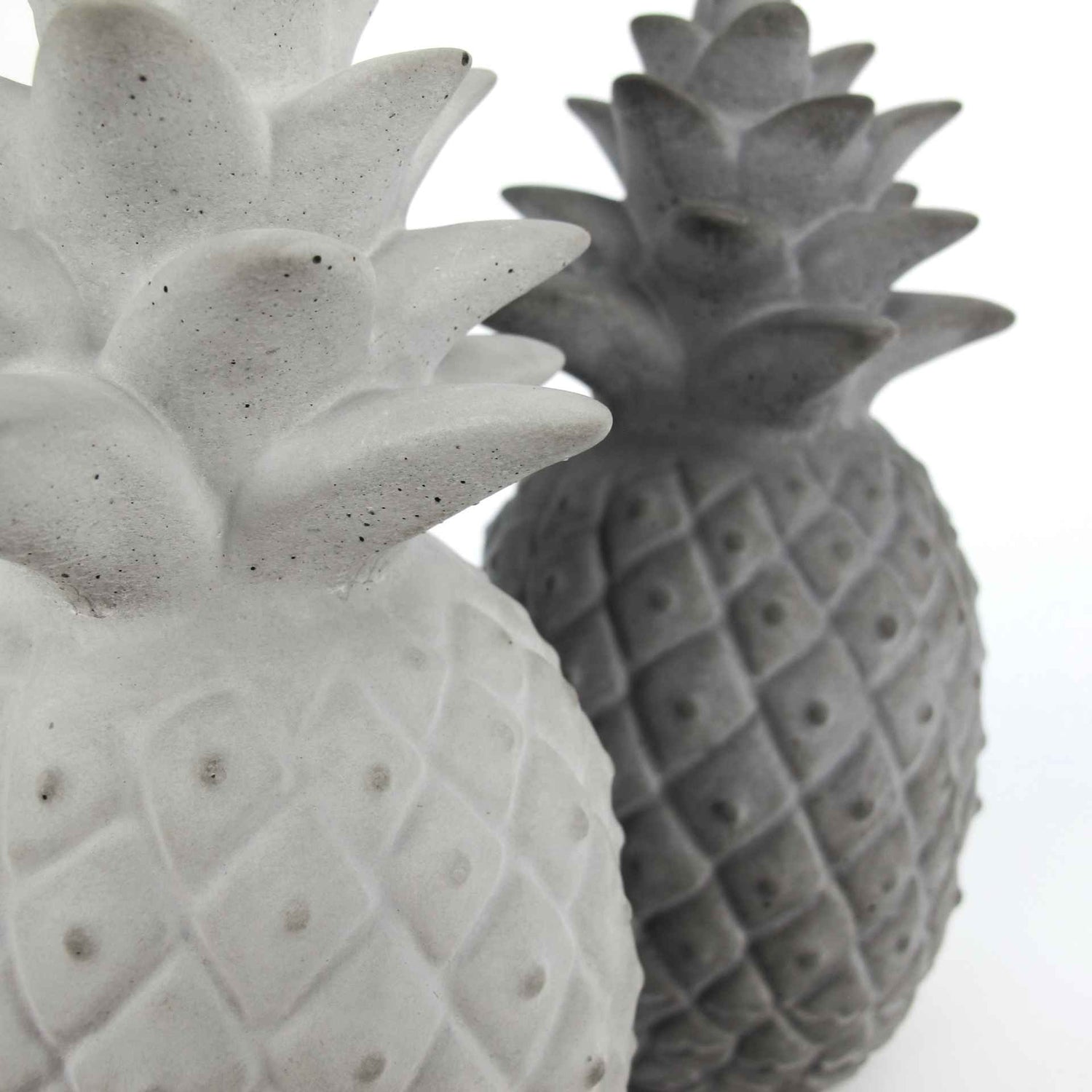
One thing can be said in advance: not all concrete is the same!
Through extensive testing, we have developed the perfect concrete mix for us. Our focus was particularly on developing a high-quality concrete that is impressive in terms of durability and robustness. We also felt a particular need to optimise the concrete mix so that it is waterproof. This has the advantage that we can use the concrete to make flower pots and vases, and it also creates the well-known lotus effect, which allows water to run off the concrete. It also makes cleaning easier because dirt has a harder time "sticking" to the surface. In construction, this is even referred to as "self-cleaning concrete" because, for example, as a facade element, it is cleaned by rain and thus practically cleans itself.
The hydrophobic effect achieved with our concrete is not only created by a simple surface coating, as is often used, but is already anchored in our special concrete recipe. In addition, our concrete not only impresses with its even and smooth surface, but also with a completely colored mass.
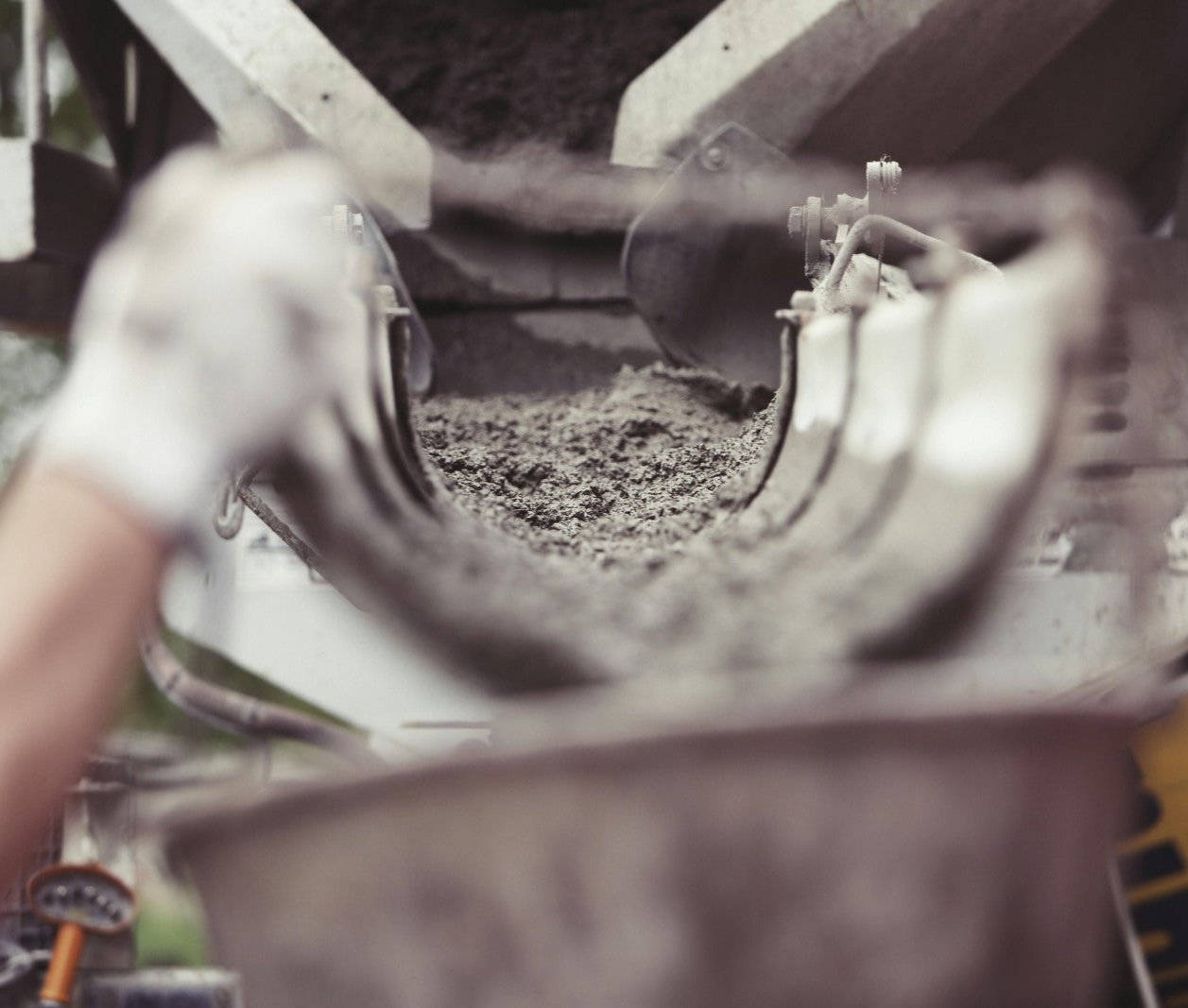
A ready-mixed product was out of the question for us from the start, as it leaves little room for adjustment due to the lack of a list of ingredients. So we designed our own concrete using cement, sand and other ingredients.
We started with prior knowledge of the composition of concrete in construction, but determining a concrete recipe for a concrete wall with a thickness of 200 mm is quite different than for a vessel with a wall thickness of 10 mm.
The first and probably easiest step is to adjust the so-called "maximum grain size" to the grading curve of the concrete. The grading curve describes the composition of different grain sizes, from sand to gravel in the concrete. In construction, a maximum grain size of 8 mm is usually chosen for delicate components, but in exceptional cases this can also be smaller. For thick components, such as foundations, a maximum grain size of 32 mm is often chosen. In general, it can be said that the larger the selected maximum grain size, the cheaper the same amount of concrete can be obtained. Due to the nature of the component, however, it is not always sensible to choose the largest possible grain size. This becomes clear when you concrete a container with a wall thickness of 10 mm with a maximum grain size of 8 mm. It just about fits in, but when processing it, you will very quickly notice that the individual grains wedge together and the mold is not filled properly. To avoid this, we use a maximum grain size of 2 mm for most of our products, but we reduce the grain size to less than 1 mm for some very delicate pieces to achieve even better results.
But this only lays the foundation for the concrete recipe, as the maximum grain size only describes the dimensions of the largest grains. However, it is very important to incorporate the right mixture of different grain sizes in the range of 0 - 2 mm into the recipe, as this is the only way to create the densest concrete matrix possible.


